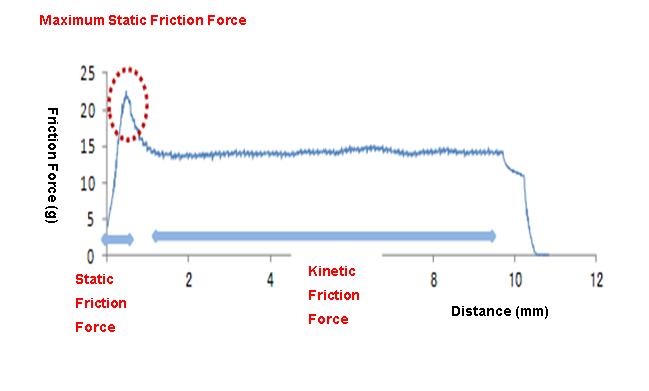What is Friction?
The resistance from the contact surface between two solid materials caused by reciprocal movement is called as “friction”, and the resistance force arising at that time is called “friction force”. In physical science, tribology is the major discipline that includes the study of the frictions mentioned here.

The friction force is classified into static friction and kinetic friction. The former is the resistance to initial movement, the latter refers to the resistance against motion. The greatest friction force is generated just before moving, as friction drag is the maximum static friction force.

“The coefficient of friction (μ)” is obtained by dividing friction force (F) by “vertical load (W)”. An intensity level of resistance is expressed predominantly with the coefficient of friction (μ) rather than friction force (F).
Coefficient of Friction μ= F / W
So far, no standard measurement methods exist, nor are they structured. Measurement tests have been carried out in various combinations of specimen shapes and sizes and sliding conditions. The most typical measuring methods are summarized and shown in the following table.
It should be noted that the methods of ball-on-plate, ball-on-disk for a point contact, and pin-on-disk for a plane contact are especially easy to operate. Consequently, these methods' evaluations have been adopted for approximately half of the scientific papers currently published.



